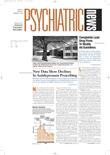The ability of light to heal the psyche is receiving increasing recognition. The latest finding is that light combined with an SSRI antidepressant is more efficacious than an SSRI antidepressant alone in treating nonseasonal major depression.
This finding was reported in a study led by Klaus Martiny, M.D., Ph.D., a psychiatrist affiliated with the Frederiksborg General Hospital in Hilleroed, Denmark. Results appeared in the August Acta Psychiatrica Scandinavica.
The objective of the study, Martiny and his coworkers explained, was to determine whether light is an effective adjunct in the treatment of nonseasonal major depression, “using the greatest possible difference in light dosage between active and placebo light and using the most sensitive clinicianrated depression scales as outcome measures of treatment.”
Specifically, over a five-week period, 102 patients diagnosed with nonseasonal major depression according to DSM-IV criteria received the SSRI antidepressant sertraline (50 mg daily). In addition, half of the subjects were exposed to active light—10,000 lux of bright white light one hour daily—and the other half were exposed to placebo light—50 lux of red dim light 30 minutes daily. Subjects' responses to treatment were then tracked on a weekly basis using the Hamilton Rating Scale for Depression, the Hamilton six-item subscale, and two other depression rating scales. At the end of the five-week period, depression scores for the two light groups were compared.
The active light group showed significantly less depression than the placebo light group on all four scales. For example, on the Hamilton six-item subscale, 71 percent of the active light group, but only 39 percent of the placebo light group, were found to have responded to treatment—a highly significant difference. Response was defined as a 50 percent or greater reduction of baseline scores on the scale.
Forty-two percent of the active light group, but only 19 percent of the placebo light group, were found to have achieved remission from depression—a significant difference. Remission was defined as a Hamilton six-item subscale score of 4 or less.
Furthermore, the investigators examined their results to see whether they might have been confounded by the season of year in which subjects were treated. They found that light was somewhat more efficacious in subjects who had been exposed to light during the winter than in subjects who had been exposed to light in months outside of winter, but the difference was not significant.
Moreover, the group treated with active light did not seem to have experienced an earlier awakening because of it. “As sleep deprivation is a powerful antidepressant,” the scientists pointed out in their study report, “even small sleep deprivations induced by treatment design could have obscured the effect of the light therapy.”
“The study results support the use of bright light as an adjunct treatment to antidepressants in nonseasonal depression,” Martiny and his group concluded, especially as depressed patients often have to take an SSRI four to six weeks before receiving any relief.
In fact, the scientists found that after only one week of active light exposure, subjects had significantly less depression than the subjects who did not receive it. (When light is used to treat seasonal affective disorder, it also has an onset of action after only a few days of treatment.)
Some questions about using light as an adjunct to antidepressant therapy, however, need to be answered, Martiny and his colleagues noted in their report. For example, Martiny told Psychiatric News, they would like to investigate whether exposure to natural sunlight instead of to a light box in one's home works just as well in enhancing antidepressant effectiveness. They also would like to investigate whether light therapy combined with sleep deprivation brings about an even more rapid remission from depression than light alone can achieve. He and his group are launching a project to get the answer, Martiny said.
The study was financed by the Danish Medical Research Council, the Danish Psychiatric Association, the Frederiksborg General Hospital, and seven other foundations.
An abstract of “Adjunctive Bright Light in Nonseasonal Major Depression: Results From Clinician-Rated Depression Scales” is posted at<www.blackwell-synergy.com/doi/abs/10.1111/j.1600-0447.2005.00574.x>.▪
